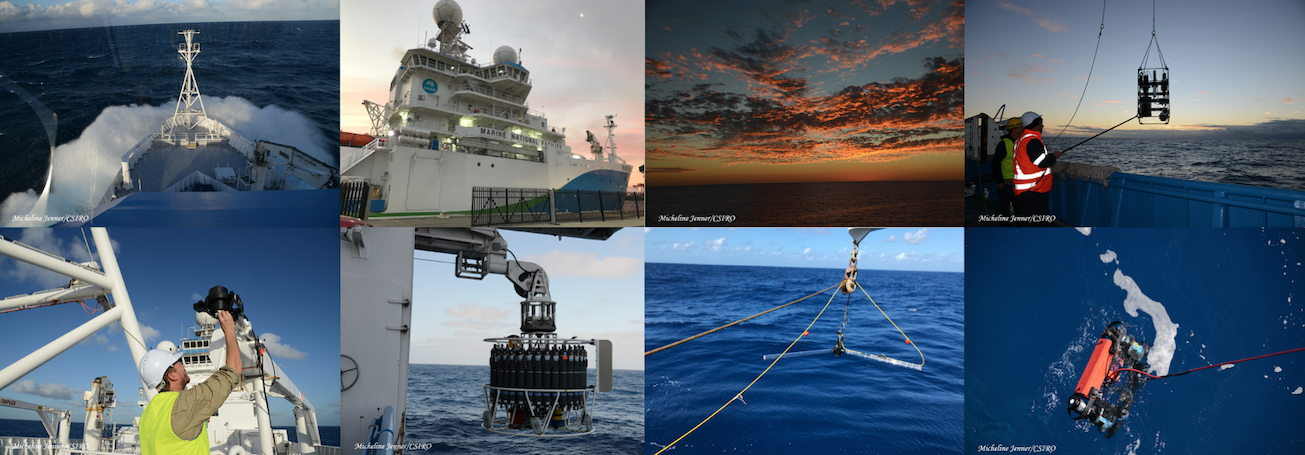The 110°E-line research voyage
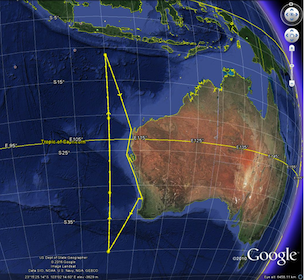
This research voyage has occurred in May-June 2019, and revisited part of the Australian EEZ (110°E; track on the map indicated by a yellow line) last studied five decades ago when a baseline was established for the physical, chemical and biological oceanography of this atypical ocean region. As part of the second International Indian Ocean Expedition, we put a multidisciplinary, world-leading team aboard the RV Investigator to undertake an integrated oceanic ecosystem study incorporating physical processes, nitrogen sources, primary productivity, food webs and bio-optics. This study plans on assessing the effects of climate change on Australian ocean domain against the 1960s benchmark and contribute to development of mathematical models to assist in management of Australia’s oceans.
See the Curtin media release.
RSSRG was responsible for the sub-group working on optics, satellite ocean colour remote sensing and phytoplankton primary production.
The entire team embarked on the Australian Marine national facility (MNF): the R/V Investigator, which is pictured below:
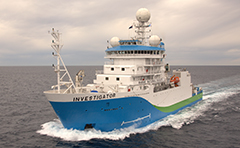
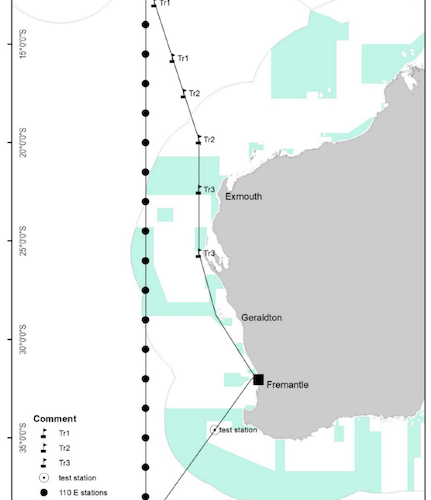
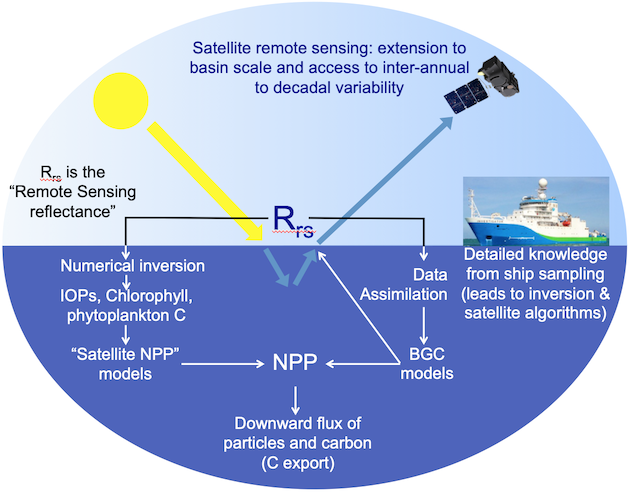
Conceptual scheme underlying the proposed research. Inspired from the EXPORTS science plan rationale
We aim to achieve this by combining
- A unique optical-biogeochemical dataset from the Eastern Indian Ocean Voyage.
- Satellite ocean colour remote sensing observations.
- Phytoplankton productivity modelling (both satellite-based diagnostic approaches and prognostic coupled physical-biogeochemical models).
A few pictures from the voyage:
